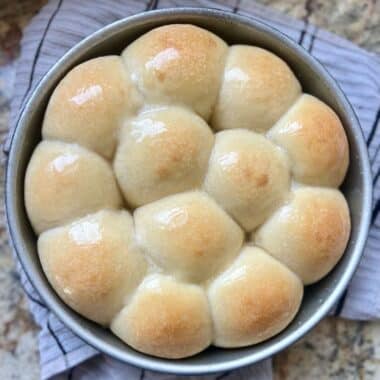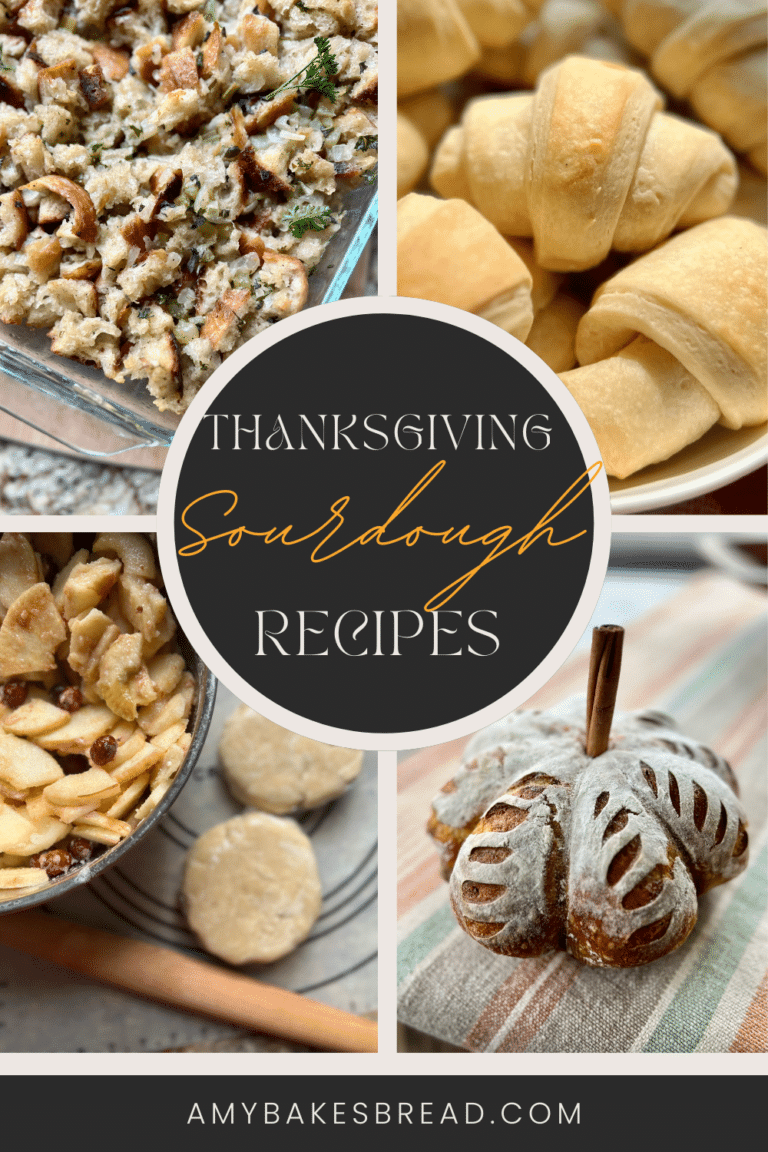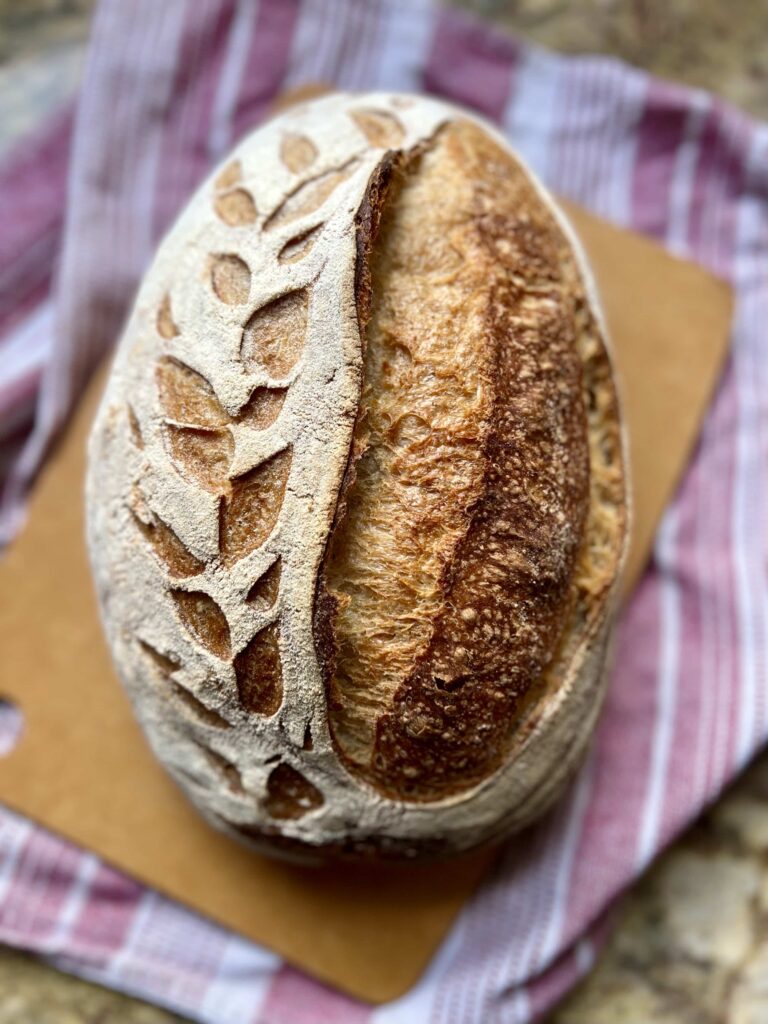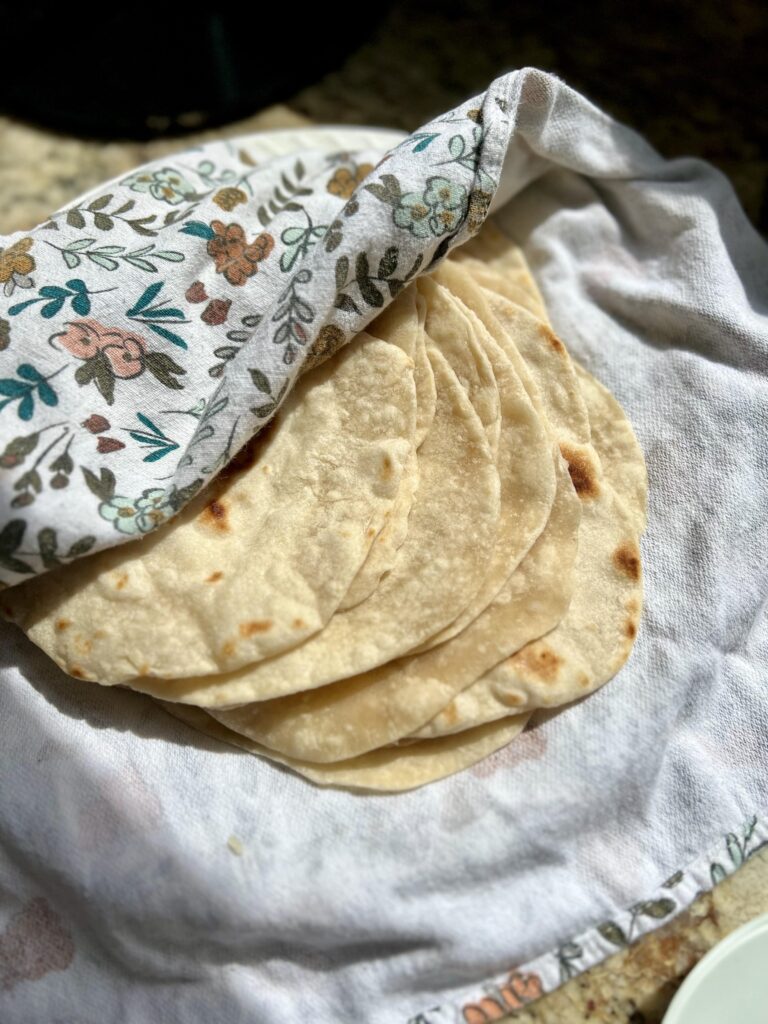Sourdough Dinner Rolls
This post may contain affiliate links. Please read our disclosure policy.Growing up, Sunday dinner was an important family tradition – coming together as a family on Sunday afternoon to eat a nice big meal. An important part of that tradition was dinner rolls. At that time, it would have been a yeasted version that was fairly straightforward and easy to make. It complimented every meal, no matter what it was and made sure there was always something on the table we were sure to love. Rolls were usually gobbled up with barely any left over, because even though there may have been steak and potatoes on the table, the dinner rolls were always snatched up first. This recipe is the sourdough version of those dinner rolls – light and fluffy while being 100% sourdough. Easy to mix, proof and bake all in the same day, these are the perfect sourdough dinner rolls.

Why You’ll Love these Sourdough Dinner Rolls
What sets these sourdough dinner rolls apart from others? They are simple. Easy to mix up, rise, shape, rise again and then bake. They taste incredible – soft and fluffy and made with all good ingredients. You will love how easy this recipe is and how my baker’s timeline helps you plan how to let them rise before baking. Most of all, your family is going to love these, a go-to sourdough dinner roll that is great for a special dinner or family gathering.
Sourdough Baker’s Timeline
A sample baking schedule helps me when baking with sourdough. Sourdough takes much longer to rise than commercial yeast bread. This schedule helps me plan my bake. A note: This schedule assumes the dough temperature is 78-80°F throughout the process.
| Day 1 | Mix Levain |
| 9:00 PM – 9:00 AM | Mix Levain, let rest overnight for 10-12 hours at 78-80ºF until bubbly, active and peaked |
| Day 2 | Mix Dough, Bulk Fermentation, Shape, Proof, Bake |
| 9:00 AM – 9:15 AM | Mix Dough |
| 9:15 AM – 1:15 PM | Bulk Fermentation at 78ºF-80ºF |
| 1:15 PM – 1:30 PM | Shape Rolls |
| 1:30 PM – 5:00 PM | Proof Rolls (could take a little longer if proofed at cooler temperature) |
| 5:00 PM | Bake |
Important Ingredients in Sourdough Dinner Rolls
- Sourdough Starter: This recipe uses ripe, bubbly, active sourdough starter to make a levain before mixing the dough. If you prefer to forgo the levain and use a ripe, bubbly and active sourdough starter, you can substitute that for the levain in the recipe.
- Whole Milk: 2% also works – you can substitute a dairy-free alternative or water – but it may not be quite as soft.
- Sugar: Just a little bit of sugar is added to these rolls to enhance the flavors.
- Unsalted Butter: Melted and cooled unsalted butter allows you to control the salt content in the dough and gives these rolls a rich flavor.
- Salt: Just a little bit of salt tempers the fermentation and brings out the flavor in the rolls. Don’t leave it out.
- Cornstarch: Cornstarch is an unusual ingredient in dinner rolls, but I’ve found it helps give the rolls a super-soft texture.
- Bread Flour: This recipe is made and tested with bread flour. Bread flour keeps the rolls chewy and gives a good rise. If you want to substitute all-purpose flour instead, add a little vital wheat gluten for best results.

How to Make Sourdough Dinner Rolls
Mix Levain
1:10:10 Levain (ready in 10-12 hours/overnight): This recipe calls for a levain mixed the night before you mix the dough. It should take 10-12 hours until it’s ready to be mixed with the dough, if you keep the levain temperature at 78-80°F. Levain is ready when it has doubled in size, has lots of bubbles, a slightly sour aroma and is just about to start going down from its peak height. Mix together:
- 7 grams of ripe/mature starter
- 70 grams of warm water
- 70 grams of bread flour
If you prefer to mix the levain the morning you make the rolls, you can mix a 1:1:1 levain that is ready in 3-4 hours. Mix together:
- 45 grams of ripe/mature sourdough starter
- 45 grams water
- 45 grams bread flour
Do you have to use a levain in this recipe? No. I prefer it, but if you have a well-maintained and frequently refreshed starter that is large enough, you can substitute that in place of the levain in the recipe.
Mix the Dough and Begin Bulk Fermentation
Add all the ingredients to the bowl of a stand mixer. Turn the mixer on and knead the dough for 5-8 minutes until a soft, smooth dough forms. The dough should feel tacky, not overly sticky. If you don’t have a stand mixer, use a kitchen bowl and your hands, kneading for 10-12 minutes. Once kneaded, place the dough in a warm 78-80ºF place to rise and bulk ferment for about 4 hours. If your dough temperature is cooler than 78ºF, it will need to ferment longer. You are looking for a very slight aeration of the dough during this time. It will not rise much, but it will become more aerated and strong as it ferments.

Shape the Dough
After 4 hours, dump the dough out on the countertop and separate into 12 equal pieces. Roll each piece of dough into a ball by taking the dough and pulling/pinching the sides until it forms a ball. Then roll the ball on the counter using your hand in a cupping shape (see video here) to seal the balls and create tension for the roll to rise. Place shaped dough balls in an 8 or 9 inch round pan and cover.


Proof the Rolls
Keep the rolls in a warm 80-85ºF place for 3-4 hours until rolls have puffed up, doubled in size and risen. They should feel very light, fluffy and airy before baking them. If your dough temperature is below 78ºF, this proofing is going to take much longer. If it’s in the upper 80ºs, it is going to go faster. Watch the temperature and the rolls and do NOT bake the rolls until they have appropriately risen. Find a way to warm up the dough.

Baking Sourdough Dinner Rolls
Pre-heat the oven to 350ºF. Bake the risen rolls for about 30 minutes until baked all the way through and lightly brown on the top. The internal temperature of the baked rolls should be right around 190-195ºF. Brush rolls with melted butter and let cool just a little before serving. Enjoy!



Amy’s Recipe Tip
This recipe is based on my very popular soft white rolls with sourdough discard. I use cornstarch in both of these recipes to make the dough very tender, and the resulting rolls are so soft and delicious.
Substitutions
A few substitutions you may be wondering about for these sourdough dinner rolls:
- Milk: Substitute a dairy-free milk or water if desired. The dough may not be quite as soft and tender as the milk version, but it should work well.
- Butter: Substitute a neutral-flavored oil for the butter if desired.
- Cornstarch: Instead of cornstarch, use good quality potato flakes (may need to adjust the liquid in the recipe) or leave the cornstarch out completely.

How to Store Leftovers
Leftover dinner rolls can be stored in an airtight container or ziplock bag after they’ve cooled completely. I like to freeze them for best results.
If you liked this recipe for sourdough dinner rolls, you’ll also like…
- Sourdough Discard Soft White Rolls
- Sourdough No-Knead Crescent Rolls
- Sweet Sourdough Hawaiian Rolls
- Super Soft Sourdough Dinner Rolls
- Parmesan Herb Sourdough Rolls
- Sourdough Pretzel Rolls

Frequently Asked Questions
I have made this recipe many times with 8 rolls and with 12 rolls. I prefer 12 rolls because they are a little bit smaller and a better size for a dinner roll. 8 rolls work well if you want a sandwich roll or a larger-sized roll.
Yes! This sourdough dinner roll recipe works great for burger buns or hot dog buns. Shape into 6 or 8 buns depending on how large you want your buns to be.
Yes. This recipe is actually based on one of my most-loved sourdough roll recipes that uses sourdough discard and instant yeast. You can find that recipe here.

Sourdough Dinner Rolls
Equipment
Ingredients
Levain (1:10:10, rises in 10-12 hours if kept at 78-80ºF)
- 7 grams sourdough starter ripe, bubbly and active
- 70 grams all-purpose or bread flour
- 70 grams water
Sourdough Dinner Rolls
- 120 grams levain ripe, active and bubbly, about 1/2 cup
- 235 grams whole milk (or 2%) warmed, about 1 cup
- 30 grams granulated sugar about 2 Tablespoons
- 70 grams unsalted butter melted and cooled, about 5 Tablespoons
- 10 grams salt about 1 1/2 teaspoons
- 25 grams cornstarch about 2.5 Tablespoons
- 450 grams bread flour about 3-4 cups
Instructions
Mix Levain (1:10:10, rises in 10-12 hours if kept at 78-80ºF)
Sourdough Dinner Rolls
- Mix Ingredients: To a stand mixer (or a bowl if you are kneading by hand), add the ripe levain, warm milk, sugar, melted butter, salt, cornstarch and bread flour. Turn the mixer on and begin kneading the dough. If using cup measurements, reserve a little flour to add in during the kneading process – this keeps you from over-flouring your dough. Knead the dough for about 8 minutes in the stand mixer or 10-15 minutes by hand. Dough should be smooth, tacky but not overly sticky.
- Bulk Fermentation: At this point the dough will be soft and cohesive. Dump the dough into a container and cover. Set the dough in a warm, 78-80ºF place for 4 hours. Take the temperature of the dough as needed to make sure it stays right around 78-80ºF. This temperature is optimal for fermentation. If your dough temperature is cooler than 78-80ºF, it will need to ferment longer than 4 hours.
- Shape and Proof: Dump the dough out onto a (clean) countertop. Cut the dough into 12 equal-sized pieces. Take each piece of dough and pull/pinch up the sides until it forms a ball. Roll the ball on the counter using your hand in a cupping shape (see video here) to seal the balls and create tension for the roll to rise.
- Nestle rolls together in an 8 or 9 inch baking pan. Cover the pan and let the rolls rise again for about 3-4 hours. During this time, I like to keep the rolls between 80-85ºF to encourage a little faster rise. If your temperature is warmer than this, the fermentation will go FASTER. If the temperature is colder than 78ºF, the fermentation will go SLOWER. I use a bread proofer to keep the temperature consistent.
- Bake: Once the rolls have risen, doubled in size, are touching each other and soft, fluffy and airy, preheat oven to 350ºF. Bake the rolls in the pre-heated oven for 30 minutes until baked all the way through. The internal temperature of the rolls should register 190ºF.
- Spread melted butter over the tops of the rolls and enjoy!







Faves!! 😍😋